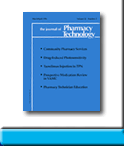 |
 |
Safety of Proton Pump Inhibitors in Community-Dwelling Older Adults
Adrienne J Lindblad and Cheryl A Sadowski
To request full article click here.
OBJECTIVE: To describe proton pump inhibitor (PPI)–related adverse effects in community-dwelling older adults.
DATA SOURCES: Articles were identified via PubMed (1966-March 2008) using the terms proton pump inhibitor, adverse drug effects, safety, pneumonia, fractures, Clostridium difficile, and vitamin B12. Clinical trials, meta-analyses, and drug evaluations published in English were selected. Articles excluding patients over 65 years of age or those involving solely institutionalized patients were excluded.
Study Selection and Data Extraction: Twelve studies were selected, 10 of which were case-control or population-based studies. Three of 4 studies investigating the association of PPI use with C. difficile infection found a positive association. Many participants in these studies had no history of antibiotic exposure prior to infection. Three studies found a significant relationship between community-acquired pneumonia and PPI therapy, with a possible dose–response relationship. Two studies found an increased risk of fracture with PPI use, with a possible dose-response relationship. Two of 3 included studies found an association between vitamin B12 deficiency and PPI therapy.
Data Synthesis: The majority of studies found significant associations between PPI use and the development of C. difficile infection, pneumonia, fractures, and vitamin B12 deficiency, all of which are plausible based on the mechanisms of action of PPIs. With a lack of randomized controlled trials, the underlying causes of these adverse effects remain controversial.
CONCLUSIONS: Cause and effect between PPI use and C. difficile infection, pneumonia, fractures, and vitamin B12 deficiency has not been established. Well-designed, prospective, randomized studies are required to confirm whether there are risks associated with long-term PPI use. Until the results of such studies become available, PPI use should be reviewed for appropriateness at regular intervals in individual patients, as the consequences of these complications in the elderly could be devastating.
J Pharm Technol 2008;24:213-8.
ACPE Universal Program Number: 407-000-08-054-H01-P
To request full article click here.
|
|
|
||
|

